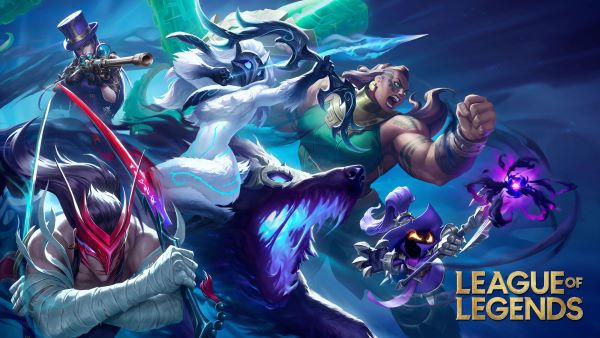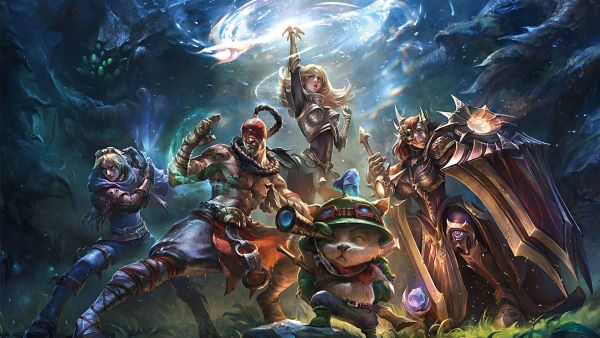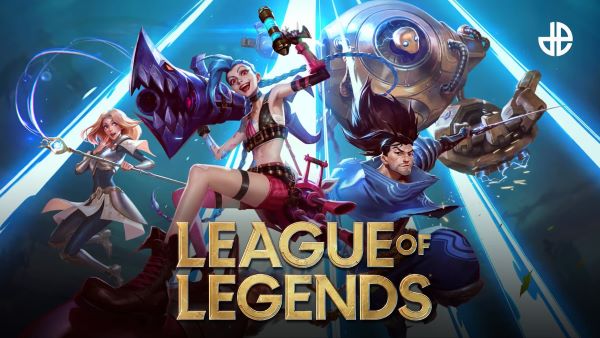Advertisement
Popular Now
Playing League of Legends is as much a mental game as it is a mechanical one. Tilt, the emotional frustration or anger that clouds judgment, is one of the biggest barriers to improvement. This article explores tilt's impact on performance, how to recognize it, and actionable strategies to overcome it.
 Tilt is a psychological state where frustration or anger impairs your decision-making and performance in the game.
Tilt is a psychological state where frustration or anger impairs your decision-making and performance in the game.
 Mental resilience is your best defense against tilt.
Mental resilience is your best defense against tilt.
 Addressing tilt is an ongoing process that requires a long-term perspective.
Addressing tilt is an ongoing process that requires a long-term perspective.
 Tilt is an inevitable part of competitive gaming, but it doesn't have to control your experience. By understanding its causes and implementing strategies to manage it, you can transform tilt into an opportunity for growth. Remember, mastering your mindset is just as important as mastering your mechanics in League of Legends.
Tilt is an inevitable part of competitive gaming, but it doesn't have to control your experience. By understanding its causes and implementing strategies to manage it, you can transform tilt into an opportunity for growth. Remember, mastering your mindset is just as important as mastering your mechanics in League of Legends.
What is Tilt in League of Legends?
 Tilt is a psychological state where frustration or anger impairs your decision-making and performance in the game.
Tilt is a psychological state where frustration or anger impairs your decision-making and performance in the game.
Recognizing Tilt
Tilt can manifest in several ways:- Rash Decisions: Overcommitting to fights or chasing kills unnecessarily.
- Negative Communication: Blaming teammates or engaging in arguments in chat.
- Loss of Focus: Missing CS, mistiming abilities, or forgetting objectives.
Common Causes of Tilt
Players experience tilt for various reasons:- Mistakes: Personal misplays can lead to self-criticism.
- Team Dynamics: Perceived lack of effort or trolling by teammates.
- Losing Streaks: Consecutive losses amplify frustration and doubt.
The Psychological Impact of Tilt
Tilt not only affects individual performance but also team dynamics.Individual Performance
When tilted, your ability to process information and make sound decisions diminishes. This leads to a cascade of errors, worsening your gameplay.Team Environment
Tilted players often communicate negatively, which can demoralize the entire team. A single toxic attitude can spiral into a lost game.Building Mental Resilience
 Mental resilience is your best defense against tilt.
Mental resilience is your best defense against tilt.
Positive Mindset
Maintain a growth-oriented mindset. Recognize that mistakes are opportunities to learn rather than reasons to rage.Practicing Mindfulness
Mindfulness techniques, such as deep breathing and grounding exercises, can help you stay calm and focused during stressful moments.Pre-Game Preparation
Preparation is key to reducing the likelihood of tilt.Setting Realistic Expectations
Before queuing, assess your mental state. If you’re tired or frustrated, consider taking a break instead of playing.Warm-Up
Engage in a few practice games or drills in the Practice Tool to get into the zone before jumping into ranked matches.Managing Tilt During the Game
Even with preparation, tilt can creep in mid-game.Recognizing Early Signs
If you notice your emotions rising, pause and take a few deep breaths. Awareness is the first step to regaining control.Muting Negative Influences
If a teammate is toxic, mute them immediately to avoid escalating conflicts.Reframing Mistakes
Instead of focusing on what went wrong, think about what you can do differently next time. This shifts your focus from frustration to improvement.Post-Game Recovery
How you handle the aftermath of a game is just as important as the game itself.Reviewing Gameplay
Analyze replays to identify areas for improvement. Avoid dwelling on mistakes and focus on actionable insights.Taking Breaks
Step away from the game after a frustrating loss. A short break can prevent one bad game from affecting the next.Long-Term Strategies to Reduce Tilt
 Addressing tilt is an ongoing process that requires a long-term perspective.
Addressing tilt is an ongoing process that requires a long-term perspective.
Developing Emotional Awareness
Regularly reflect on your emotional triggers and responses. Journaling or discussing your experiences with friends can provide clarity.Building a Support Network
Engage with positive, like-minded players who encourage constructive feedback and growth.Avoiding Common Tilt Traps
Recognizing and avoiding common pitfalls can help you stay on track.The Blame Game
Blaming teammates rarely solves problems and often exacerbates tilt. Focus on what you can control.Overloading
Playing too many ranked games in one session can lead to burnout. Set a limit to maintain focus and energy.Professional Insights on Tilt
Even professional players experience tilt, but they’ve developed strategies to overcome it.Insights from Pro Players
- Pre-Match Rituals: Many pros have rituals to calm their minds before matches.
- Coach Guidance: Coaches often help players stay focused and provide psychological support.
Lessons from Esports Psychology
Psychologists working with esports teams emphasize the importance of mental health, resilience training, and communication skills.Conclusion
 Tilt is an inevitable part of competitive gaming, but it doesn't have to control your experience. By understanding its causes and implementing strategies to manage it, you can transform tilt into an opportunity for growth. Remember, mastering your mindset is just as important as mastering your mechanics in League of Legends.
Tilt is an inevitable part of competitive gaming, but it doesn't have to control your experience. By understanding its causes and implementing strategies to manage it, you can transform tilt into an opportunity for growth. Remember, mastering your mindset is just as important as mastering your mechanics in League of Legends. 
















